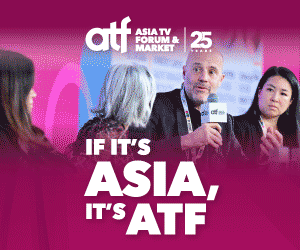
For Viacom International Media Networks-owned MTV Asia, like MTV everywhere else in the world, there was no question that a brand reinvention had to follow millennials wherever they’re going... and spending. In Asia, Viacom is working off figures that show Asia millennials’ current purchasing power at about US$907 billion and forecasts the region to be home to 60% of the world’s millennials by 2020.
The global “brand evolution”, which arrives in Southeast Asia on 1 September, follows MTV’s worldwide switch from the 1980s “I want my MTV” to “I am my MTV”. MTV Asia will also follow the MTVbump user-generated-content (UGC) initiative, which was created for international networks only and does not run in the U.S.
Finding what really matters to its young audiences has driven surveys such as asking 800K Facebook followers which of 10 trending topics from 2014 mattered most to them. From options ranging from war in Syria to flight MH370 to the ice bucket challenge, users selected “selfie”. MTV translated this into a focus on users starring as themselves.
Paras Sharma, vice president of MTV and Comedy Central brands, and digital media, Asia, says the team’s mindset is moving away from simply giving millennials what they are looking for to, instead, “How do we now take a step forwards and almost become a reflection of them, so they become a part of the process as against only being the recipients?”
It’s a huge responsibility, he says. “If we are indeed to become ‘I am my MTV’, we should be able not only to reflect what our audience is but enable them to become a part of this process,” he adds.
Making the users part of the process will be done largely through new platform MTVbump – an online space where users upload their own videos or images using provided “enhancements” (think meme-ifying tools and super-saturated pastel paints) to make them broadcast-ready. This UGC is curated by MTV’s team. Users may see their content on the network within hours, running alongside network promos, which are now 15 seconds max.
“The new way of thinking is first to collapse the breaks,” Paras says. “People want to watc...
For Viacom International Media Networks-owned MTV Asia, like MTV everywhere else in the world, there was no question that a brand reinvention had to follow millennials wherever they’re going... and spending. In Asia, Viacom is working off figures that show Asia millennials’ current purchasing power at about US$907 billion and forecasts the region to be home to 60% of the world’s millennials by 2020.
The global “brand evolution”, which arrives in Southeast Asia on 1 September, follows MTV’s worldwide switch from the 1980s “I want my MTV” to “I am my MTV”. MTV Asia will also follow the MTVbump user-generated-content (UGC) initiative, which was created for international networks only and does not run in the U.S.
Finding what really matters to its young audiences has driven surveys such as asking 800K Facebook followers which of 10 trending topics from 2014 mattered most to them. From options ranging from war in Syria to flight MH370 to the ice bucket challenge, users selected “selfie”. MTV translated this into a focus on users starring as themselves.
Paras Sharma, vice president of MTV and Comedy Central brands, and digital media, Asia, says the team’s mindset is moving away from simply giving millennials what they are looking for to, instead, “How do we now take a step forwards and almost become a reflection of them, so they become a part of the process as against only being the recipients?”
It’s a huge responsibility, he says. “If we are indeed to become ‘I am my MTV’, we should be able not only to reflect what our audience is but enable them to become a part of this process,” he adds.
Making the users part of the process will be done largely through new platform MTVbump – an online space where users upload their own videos or images using provided “enhancements” (think meme-ifying tools and super-saturated pastel paints) to make them broadcast-ready. This UGC is curated by MTV’s team. Users may see their content on the network within hours, running alongside network promos, which are now 15 seconds max.
“The new way of thinking is first to collapse the breaks,” Paras says. “People want to watch content? We will get content to content. And within the transition, as against the traditional way of idents or promos, we will have this content which people have created themselves,” he adds.
Another focal point of the rebrand is for MTV Asia to be platform agnostic. “When we look at content we look at content on-air, content digital; within digital we look at content for our website, content for social, and content for on ground,” he explains. “They [millennials] consume content – they don’t consume TV content. And content definition therefore has to change,” he says.
New format, Say it in Song, which premiered on MTV Asia 19 August, plays to the digital and social push with its ready-made viral videos. The series has participants surprise a friend or loved one flash-mob style with a song that reveals a personal secret or expresses a hidden emotion.
With the rebranding push, MTV Asia hopes to build on the first half of the year’s rating growth. For first half 2015, the network has seen year-on-year improvements across markets, with standout improvements in the Philippines (+122%) and Singapore (+96%) in particular*.
Going beyond ratings, Paras hopes “when the audience wakes up on the first of September... they see the first time a linear television [channel] is not only talking to them, but shaking hands with them.” – Emily Seibel
This article first appeared in ContentAsia Issue 3, 2015, published in August 2015



















